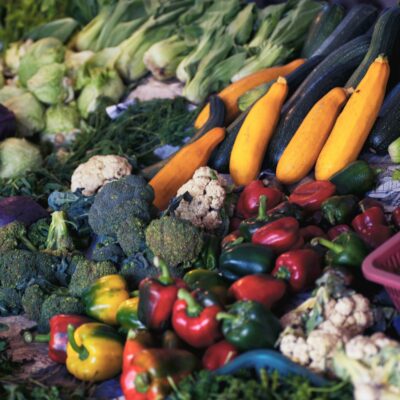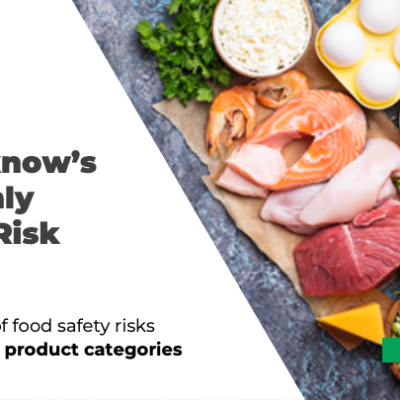
Predicting food safety and fraud risks in the dairy industry

The food safety leaders we talk to these days are analyzing thousands of past food safety incidents, trying to understand what might happen in the future. They have to take critical decisions every day for their supply chain in order to be able to prevent an issue from happening. To help make decisions to mitigate food safety issues, they perform risk and vulnerability assessment activities to answer critical questions such as:
- Which are the food safety parameters that I need to test for?
- Which ingredients will be affected most in my supply chain?
Monitoring and assessing risks in a complex and global supply chain can be challenging if one considers the large amount of data sources about hazards that need to be continuously monitored and the limited amount of time that the experts have to monitor and process the information for the hazards. Some of the most important challenges regarding the management of food safety data that we hear from food safety leaders can be summarised in the following points:
- People are still using spreadsheets with local versions
- There is no homogeneous risk assessment approach
- Too much time is spent analyzing data from several files
As explained in a previous article, powerful and intelligent workflows that combine data technologies with the experience and knowledge of food safety experts can be used to convert scattered and disconnected data to homogenous and actionable data.
Let’s see how the interconnected data can give us insights and predictions that can help us to answer critical questions in a very important sector of the supply chain like the dairy industry.
What we learned from global food safety data over the last decade for dairy products
The insights that we will present here cover dairy products such as milk, cheese, yogurt, butter, and desserts. The trend of food safety and fraud incidents reported by the authorities has been increasing during the last few years and seems that it will decrease in 2020.

The top hazards category is biological, followed by fraud which includes economically motivated adulteration. Both biological and fraud account for 80% of all the incidents reported. Other hazards category includes issues like poor and insufficient controls and processing issues.

Looking at the trend of fraud issues in dairy products, after a maximum of issues reported in 2019, in 2020 we only have a few issues reported by the authorities. This could be related to the industry’s focus on the COVID-19 situation.

Let’s look specifically at the top 10 fraud issues reported in dairy products: After the melamine scandal in 2008, during the last decade, a variety of fraud issues like incorrect labeling, misbranding, fat in dry matter, dilution with water, and adding urea were reported. Melamine was not reported during the last 10 years.

All this knowledge comes from historical data and can help us to design better preventive measures such as a more efficient testing plan.
Let’s see how we can use all this food safety data in order to predict issues in the supply chain.
What we can learn from predictions for dairy products
We have applied a methodology for the predictions (recently published in Springer) that combines big data processing technologies with artificial intelligence technologies. The first step of this methodology is the generation of a dataset that is specific for the industry for which we want to generate predictions. The second step is to select the Artificial Intelligence algorithm that best fits the problem.
Is this a regression, a forecasting, or a classification problem?
Today there are a plethora of algorithms that can be used. Each algorithm has several parameters that we need to experiment with in order to get the best prediction model. Finally, we need to train and test our model by applying different methods of splitting our tailor-made dataset into a train and test dataset.
In our predictions, we are using both machine learning and deep learning algorithms, and for each case, we select the best one. In the case of dairy products, we used a forecasting model called Prophet.

What such predictions can tell us for a product category like dairy products?
We can see incident trends for this category for the next 12 months. The prediction is that there will be an increase in incidents by 20% based on the pattern (knowledge) of incidents of the last 20 years.
The prediction model can also make an estimation of the hazards that will increase within the next 12 months. For instance, listeria monocytogenes, escherichia coli, and salmonella will increase in the next few months.
Based on the frequency and the severity of the incidents, a risk model can also predict how much the risk will be increased for a hazard like listeria e.g. by 14%. We can also have a risk heatmap of all the risks in the product category.

Our model has predicted that biological hazards in dairy products will be reduced within the next two months (89% model accuracy estimated based on the actual data of 2019).

Predictions based on global food safety incidents can be used to validate the laboratory analysis plan and make sure that you will focus on the riskiest points of the supply chain.
A plan that is not validated by the food safety trends can cause resources to be misdirected towards redundant activities, or towards addressing events that are unlikely to occur.
If you’d like to discover how FOODAKAI can help your Food Safety & Quality team prevent product recalls by monitoring & predicting risks, schedule a call with us!






